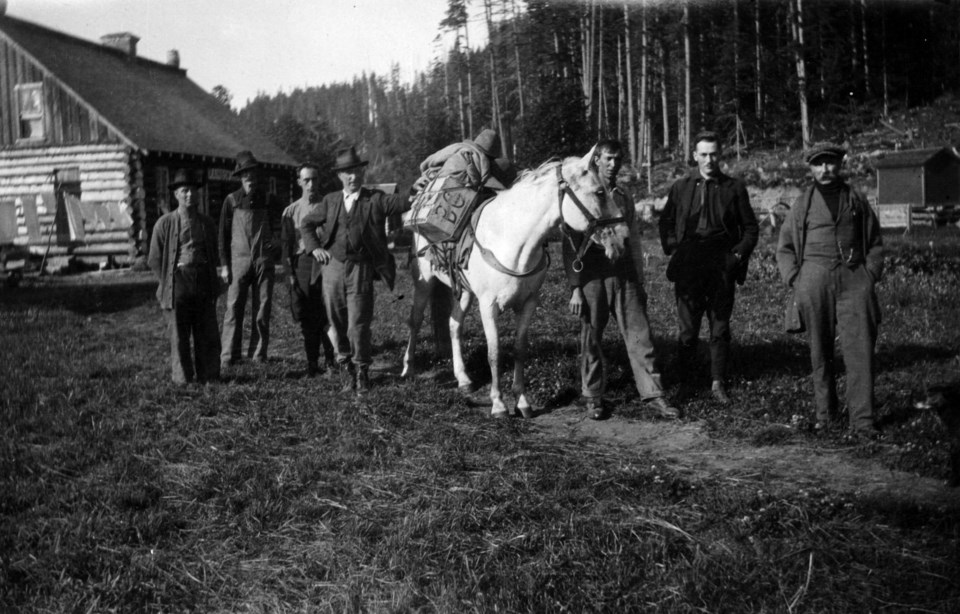When talking to people from Alta Lake and Whistler, there are many stories that are almost universal—people come to Whistler for a visit and stay for life, and along that journey most people have experienced housing woes. One experience that I did not expect to be shared among so many locals was working in drilling and blasting. While the rocky, mountainous landscape draws people to Whistler from around the world, it also creates additional engineering challenges. Lots of rock needed to be moved for the rapid growth of Whistler, and blasting was a relatively well-paying summer job.
The Pacific Great Eastern Railway (PGE), also known as the “Province’s Great Expense,” arrived in Alta Lake in 1914, bringing tourism as well as an increase in mining and forestry. The earliest known commercial mining in the area was on Whistler Mountain around 1910, with Green Lake Mining and Milling Company running 10 small claims between 1,000 and 1,300 metres elevation.
Many other small operations opened and closed over the years, but none struck it rich. As a word of caution, after finding an abandoned mine shaft in the mountains, some early mountaineers were pushing rocks down the shaft and set off unexploded dynamite. Nobody was hurt, but it is worth giving abandoned mines a wide berth for the many hazards they pose.
It was a logging company that gave Andy Petersen dynamite in the 1960s to help put a water line to Alta Lake Road for running water. Petersen and Dick Fairhurst, owner of Cypress Lodge, had never used dynamite before. “We drilled about 27 holes and put three sticks of dynamite in each hole,” Petersen recalled. “Well, this thing went off. Three of them went off and boulders came up over our heads and hit the power lines. We thought we were going to take the power down. That was our experience with dynamite, but we learned.”
When skiing arrived, Whistler became a tourist destination in the winter, but remained very quiet in summer. Many locals who worked on the mountain in the winter would have summer jobs in construction and blasting, including Murray Coates, who was in ski patrol and had a blasting company. Fellow patrollers Brian Leighton and Bruce Watt also worked some summers blasting. “There were no safety precautions,” Watt recalled on his podcast, Whistler Stories That Need to be Told. “It was just get out there and don’t be a wimp.”
Leighton had a similar experience. “I was way over my head in what I was doing. But no one died, no one was hurt,” he said. One memorable moment occurred after loading some explosives into the drill holes while creating Whistler’s sewage system. “I said to Murray, ‘I think the truck’s parked a little close here.’ He said, ‘No, no, no, it’s fine.’ So we get underneath the truck and he hits the blasting machine. Sure enough, a rock the size of a soccer ball goes through the rear window of the truck. I mean, we were safe, but the truck not so much.”
Before she became a lawyer and later the mayor of Whistler, Nancy Wilhelm-Morden also worked as a driller and blaster for the Ministry of Highways. She wasn’t so worried about rocks landing on her, but as her boss watched closely to make sure she was setting the dynamite correctly, “I was always worried that he was going to spit this horrible chewing tobacco on the back of my head,” she recalled.
The Whistler Museum has more stories about drilling and blasting than will fit in one article, but nowadays we are much more familiar with the sound of avalanche bombs. Hopefully they are ringing throughout the valley again soon!




